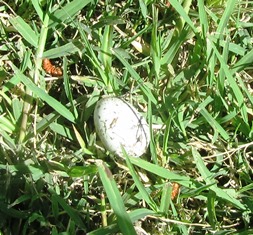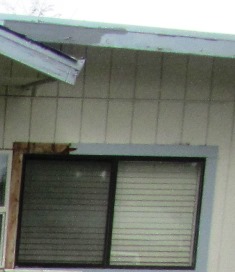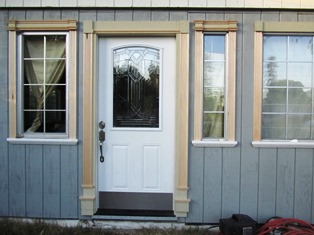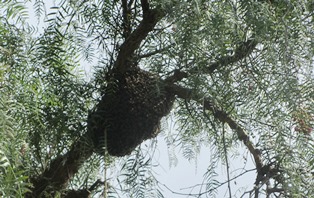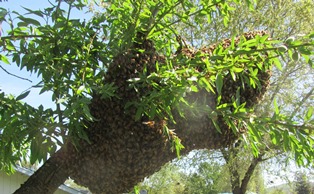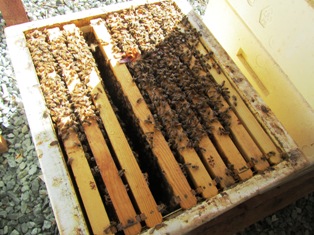Archive for April, 2013
Growing Wildflowers
You might call it serendipitous. Last weekend while Carlos and I replaced windows along the front of the house, my son went hiking in Marin with a cousin. While we trounced on the bed of wildflowers planted under the windows, my son was simultaneously picking wildflowers on his hike.
He brought home a fistful of lupines, poppies, California buttercups, heather, and wild mustard blooms.
It’s not a secret that Spring clothes Nature in her most majestic colors and patterns. I can just imagine the sight of those flowers filling a hillside. The moment I walk into my kitchen, my gaze is drawn to the intensity of lavender, blue, yellow, and orange blossoms adorning the my window.
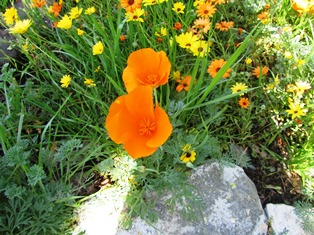
The brilliant orange color of the California poppy is most dazzling when planted with purple lupines
For me, the sight of wildflowers growing on the sides of hills and mountains in Northern California seems to lighten my spirit and energize me. That’s a good reason, I figure, to grow them in beds at the entrance of our home. Their perkiness and bright colors welcome one and all.
When wildflowers are indigenous or have adapted to their habitats, they are often resistant to diseases and local pests. If you gather seeds from the wild, plant them soon after you harvest them. If they dry out, they enter dormancy (sleep) and may not not emerge from their dormant state.
Give wildflower seed the right soil–some will do well in rock gardens, but others want humus-rich soil. Take note of the soil where you found them growing in the wild. Woodland wildflowers will need more water than a desert plant, so take note of water needs and also the amount of sunlight exposure the plant might require.
Grow perennial wildflowers from cuttings or clump divisions.
If you buy wildflowers in containers or as bare-root plants, pay attention to the quality of the plant’s leaves, stems, and blooms. Avoid purchasing a plant that has bruised or broken stems, wilted or burnt leaves, or pot-bound.
If the plant takes an unrealistically long time to regenerate or propagate, you probably have purchased a plant that has been collected in the wild, not grown in a nursery. Give it the right conditions in which to grow and nurture it along with patience.
Morning Meandering Yields Discoveries
Mornings are my favorite time of the day. My mind is freshest after a good night of sleep, and my observation skills are best in the early hours.
With a cup of hot coffee in hand, I meander around the farmette, spying spider’s webs, still moist with dew; an outbreak of aphids on the peach tree; the first of the Mr. Lincoln dinner-plate-size roses in bloom; a pair of mourning doves poised for flight at my approach; and sunflower seedlings poking up at last in the patch dirt where we planted them two weeks ago, just as the rains were ending.
This morning, I am surprised by the amazing number of almonds that our tree has produced. It won’t be long before the squirrels discover them, too. So I’m faced with a decision of whether to share the bounty with the squirrels or place netting over the tree.
Near the front door, a bird’s egg lies in the grass, cracked on one side. From the white color and brown speckling, I figure it probably belongs to a house wren. Wrens like to built nests in cavities or flowerpots and even mailboxes. Our resident wren constructed a small nest in a hole of an exterior roof beam. This egg was likely one of five or six that the house wren typically lays.
Windows on the World
We’ve been updating our windows on the farmette house. The work recently triggered a memory of an incident involving windows at the start of the remodeling of my San Jose home years ago.
Back then, even before the architect had begun the drawings, I informed him I wanted lots of windows and even noted placement, size, and shape. The poor man hadn’t even drawn the walls yet! We had a good laugh over my exuberance.
Here on the farmette where I’m married to the architect, I recalled that memory while we were pulling out the single-paned windows and replacing them with more energy efficient, double-paned windows.
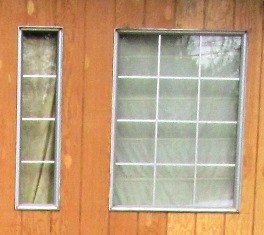
New windows can significantly transform the exterior appearance of the house as these as-yet-unframed ones demonstrate
The new windows will lower our energy bills and provide us with views of the world beyond the walls. From inside the house, I can look out and see my fairy garden (the Iceberg hybrid tea rose encircled in a mass planting of gray-green yarrow) and the blooms of purple and white irises in a circular planting around the almond tree. Once we’ve added trim and paint, the view outside in will be no less spectacular.
Déjà Vu
I heard the whine even before I looked up and saw the honeybees coalescing into a swarm. I was on my knees at the back fence of the farmette helping my husband Carlos remove weeds from under the pepper tree. I dashed into the kitchen to retrieve a stainless steel pan and, using the gardening trowel still in my hand, began banging on the pan’s bottom.
My beekeeper neighbor swears that the banging noise disorients the bees so they will take refuge in a nearby tree instead of flying miles away. This was the second swarm in as many weeks on our farmette.
The swarm from my neighbor’s hive alighted in the tall pepper tree at our back fence line. Just a week or so ago, a swarm landed in our almond tree. Dressed in his beekeeper’s suit and gloves, my neighbor arrived carrying a black garbage bag fastened to an empty bee box secured with tape. He and Carlos figured they would affixed the box to a long pole–our tree limb trimmer.
Carlos volunteered to climb the tall sectional ladder and began to suit up. He would be the rope puller who would shake the limb. The rope was already there thanks to a swarm last year in the same spot.
I wondered if shaking the bees off that high limb would work. They would have to drop precisely into the box that my neighbor would be positioning under the the writhing swarm. What if the bees fell, missed the box, and flew right back up?
Well, it did work. Most of the bees landed in the garbage bag. The bag was duly shaken over the prepared hive. There, the bees stayed. Our neighbor went home to his own gardening chores, and Carlos and I resumed our weeding, albeit in a different part of the property since a few stressed-out bees were still buzzing around that tree.
Streak of Warm Weather Starts Seasonal Bee Swarms
Last Wednesday heralded the official onset of spring. And it sure felt like it around the East Bay. The local beekeepers became more watchful as increasing bee traffic predicted an increased likelihood of swarms.
Last year, we rescued more than a dozen swarms from neighborhood trees as far away as two miles. Bees will fly up to five miles in search of food (they also need water), returning to their hives before darkness and the cool night air sets in.
Swarming is the way honeybees increase their numbers. The queen lays eggs throughout the winter and in spring, the hive will need more room to accommodate all the new offspring. Beekeepers can add “extensions,” but swarms will still happen.
The first swarm of the season found its way to my almond tree on the day before Easter. I had vigorously pruned the branches two years ago after discovering some limbs badly diseased. But the tree rebounded with hundreds of small, thin branches. The weight of the massive swarm caused the branch to give way. The bee swarm fell apart.
In less than a minute, the honeybees were again huddled around their queen on a thicker, stronger branch.
A styrofoam super with frames already inserted was placed under the branch. All it took was a couple of hard shakes of the limb to knock the bees in their new home.
The lid of the super was reattached and the box positioned so that the opening (the bees’ front door) faced the tree. The swarm would find safe haven inside the super as night approached.
After dusk, the super was turned from its western-facing direction to ensure that the bees’ front door faced east, the direction of the sunrise. Bees love the light and warmth of the sun.
Around the top of the super, some of the honeybees did a tail-waggle dance. My beekeeper neighbor told me it was their way of telling the other bees that this was their new home; to, “come on in.”
I guess those little fellows doing the waggle dance were the welcoming party.
 Facebook
Facebook Goodreads
Goodreads LinkedIn
LinkedIn Meera Lester
Meera Lester Twitter
Twitter




